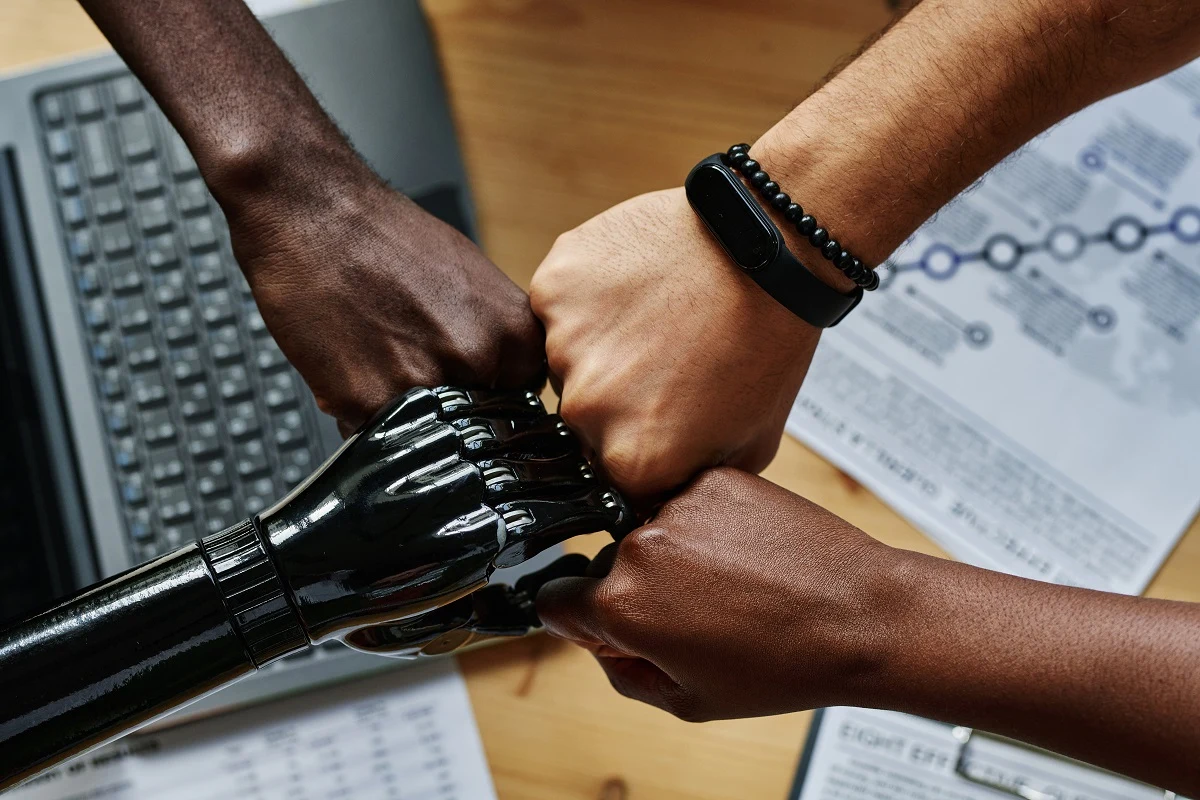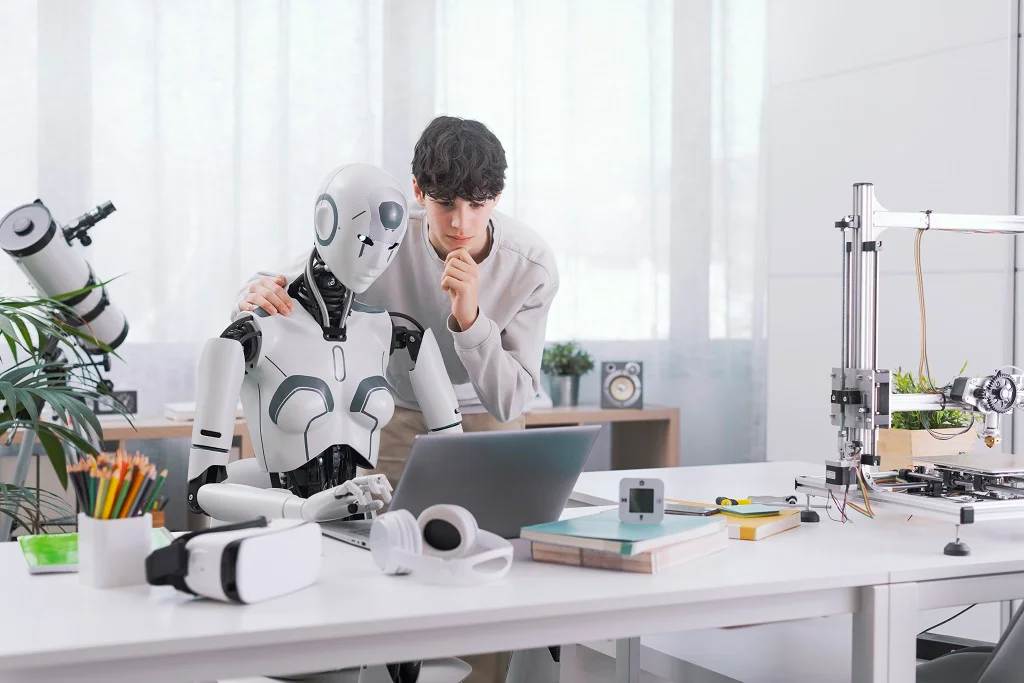In today’s world, technology has ushered in a new era of development for more automated applications, systems, and robotics, among others. With more jobs being completed by machines themselves, automation is taking on a new dimension owing to machine learning and artificial intelligence (AI). Everything is possible with AI-enabled devices. However, no matter how independent people are nowadays with these automated systems, their development will never exist without the involvement of humans.
The majority of machine learning models use human-prepared data. Having that said, communication between people and machines doesn’t end there. The most advanced systems are designed to enable constant communication between people and machines through a process known as human in the Loop (HITL).
In this blog, we’ll delve deeper with HITL. This blog aims to cover the following: what is HITL, its benefits, the necessary phases of the Human in the Loop Process, HITL use cases, and when to use it. Read on.

What is Human in the Loop?
In HITL learning, humans are involved in both the algorithm’s training and testing phases, combining supervised machine learning and active learning techniques. The process of merging human and machine intelligence produces a constant loop of feedback that enables the algorithm to generate increasingly better outcomes over time.
Any deep learning artificial intelligence project, such as those involving computer vision, transcription, and natural language processing (NLP), can make use of human-in-the-loop technology. Furthermore, human-in-the-loop methods can be utilized to swiftly and efficiently examine user-generated content when combined with AI content moderation systems. This is known as human-in-the-loop decision-making, in which the AI flags content, and then human moderators examine it to determine whether the machine is right to improve the algorithm’s decision-making.

Benefits of Human in the Loop
These are some of the main benefits of HITL:
1. Significant Leaps in Transparency
Every step featuring human involvement necessitates that humans be able to understand the system to execute the next phase and that humans have some agency in choosing the crucial stages. In the end, humans and AI work together to complete the task, making it more difficult for the process to stay concealed.
2. Effectively Apply Human Judgment to Your Work
AI systems are ultimately designed to assist people. Such systems are valuable because they take into account human preference and agency in addition to efficiency and correctness. In the humans-in-the-loop system, decision-making is done by humans.
3. Lessens the Emphasis on Creating “Perfect” Algorithms
It is possible to avoid “getting everything right all at once.” The automated parts of the system can be improved by incorporating human intelligence, judgment, and engagement, allowing the system to make meaningful progress towards the next interaction point, and potentially reducing the number of phases at each stage.
4. Often Makes Systems Bigger and Stronger
Human-in-the-loop design solutions can improve system performance, allowing humans to defer to the system as needed. Hybrid systems can perform no worse than fully automated systems, but the right human interaction can fundamentally improve performance. This is functional excellence achieved by striking the perfect balance in a particular situation.
5. Creates Stimulating Jobs
Machine learning can lead to high unemployment and an unstable economy by replacing human labor with warehouse automation. However, it offers workers more personal freedom, intellectual stimulation, and job satisfaction. Human-in-the-loop machine learning increases productivity, saves costs, and reduces injuries, staff absences, and litigation risk by removing heavy lifting and movement.
6. Better Data Collection
For machine learning models to work well, a lot of data is usually needed. When big datasets are unavailable, the algorithm might not have enough data to work with, which could lead to inaccurate conclusions. A human in the loop can guarantee accuracy and aid in the creation of data.
Important Stages of the Human in the Loop Process
Three crucial steps are involved in human-in-the-loop AI training:
Data annotating
The original data, which consists of the input data and the matching expected result, is labeled by human data annotators.
Training
The algorithm was then trained by human-machine learning teams using the appropriately annotated data. The program can find links, trends, and insights in the dataset using this data. The algorithm’s ability to draw accurate conclusions when later exposed to additional data is the ultimate goal.
Testing and evaluating
The human’s job at this point is to rectify any incorrect findings that the algorithm generates. In situations where the algorithm is unsure of a judgment, humans concentrate on fixing the outcomes. We call this active learning.

Human in the Loop Use Cases
- Machine learning with humans in the loop has a wide range of applications. Google’s search engine is a well-known example of this, as it applies HITL principles to present consumers with desired information based on words from their query.
- Netflix is another one, as it employs HITL to suggest films and television series according to a user’s previous viewing preferences.
- The development and design of websites can also apply to HITL. UI/UX teams, for instance, can use machine learning algorithms to automate their design processes. This enables them to design more individualized user experiences that consider each person’s wants and preferences.
When to Use Human in the Loop Machine Learning?
When people and machine learning algorithms work together to address one or more of the following problems, human-in-the-loop deep learning is utilized:
- When algorithmic errors have a high cost, like in the case of computer algorithms used in medical diagnosis, prognosis, and treatment.
- In situations where there is insufficient data at present, human judgment tends to outperform that of technology. Machines can take over and make better decisions once a sufficient volume of testing and training data is available.
- When the data you’re searching for is uncommon, like when you use image recognition to locate a picture of a specific person’s face. Here, machine intelligence can reduce the number of images and save a great deal of time and money by removing pictures that don’t accurately represent that person. In the last phase, the job can be delegated to humans, who will have to choose the right face among dozens of similar photos.
It can also be functional in the following situations:
- The algorithms do not understand the input.
- Improper interpretation of the data input occurs.
- Algorithms are incapable of completing the task.
- For better human accuracy and efficiency.
- To elevate the machine learning model’s accuracy.

Collaborate With Experts in the Loop
The amazement brought by AI and machine learning should not obscure the fact that humans continue to play a significant role in the process of developing algorithms. Among the most valuable concepts of today is the human-in-the-loop notion. Even though hiring workers will be necessary — which may seem counterintuitive to automating processes — you cannot create a complex, accurate, and high-performing machine-learning model in any other way.
Automation still needs humans to teach them what things are and how to do specific tasks. To interpret a text for them, they require data experts. They require staff to identify trouble spots, cover blind spots, and address training biases. Humans will continue to be involved in technological advancements such as computer vision and natural language programming.
Outsource Philippines’ data annotation services offer options for data annotation to meet your needs, delivering your data quickly and accurately while ensuring your complete satisfaction. To guarantee that your projects and data are safe with us, our company has implemented several security measures. Connect with us today!







